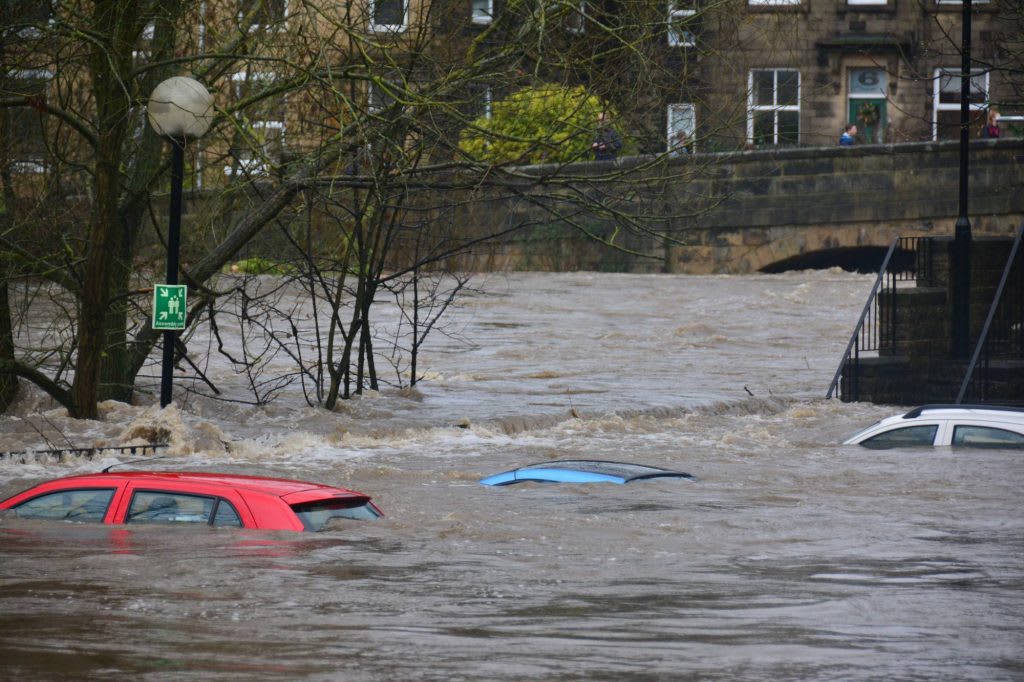Spain reels from devastating storm that killed two, flooded cities and triggered landslides
Dana the storm that brought chaos and destruction to Spain

As of my last update in September 2021, I'm unaware of a devastating storm in Spain that fits the description you provided. However, I can tell you that Spain, like many other countries, is vulnerable to extreme weather events such as storms, floods, and landslides.
To get the latest details on a specific event, you may want to refer to reliable and up-to-date news sources. They will provide you with the most recent information on such events, including rescue and recovery efforts, the extent of damages, and the response from local and national authorities.
If you have questions about Spain's general vulnerability to extreme weather, climate change, or how countries prepare for and respond to natural disasters, I'd be happy to help!
Certainly, let's delve deeper into Spain's vulnerability to extreme weather events and its preparedness and response mechanisms.
1. Spain's Geographical and Climatic Vulnerability:
Floods: Spain has numerous river basins, and areas like the Ebro Delta are particularly flood-prone. Flash floods can also be common after intense rainfall in arid regions.
Landslides: Mountainous regions, like the Pyrenees and Picos de Europa, can be susceptible to landslides, particularly after heavy rainfall or rapid snowmelt.
Droughts: Southern Spain, especially Andalusia, can experience prolonged drought conditions, impacting agriculture and water supply.
Heatwaves: Spain has experienced severe heatwaves, particularly in the interior and southern parts. These can be exacerbated by climate change.
Coastal Erosion: Rising sea levels and storm surges can impact Spain's vast coastline, particularly low-lying areas.
2. Preparedness and Response Mechanisms:
Early Warning Systems: Spain has developed meteorological and hydrological early warning systems to provide timely alerts about extreme weather events.
Civil Protection: Spain's Civil Protection is well-organized to respond to natural disasters. This includes coordination among local, regional, and national authorities, as well as volunteer organizations.
Infrastructure: Spain has invested in infrastructure, such as flood defenses, reservoirs, and desalination plants, to mitigate the impacts of extreme weather.
Awareness Campaigns: The government often runs campaigns to raise public awareness about risks and safety measures, especially during high-risk periods (like heatwaves).
Climate Change Adaptation: Spain is part of international agreements to combat climate change and has national strategies in place to adapt to its impacts. This includes research, conservation efforts, and urban planning measures.
3. Role of the European Union:
Being a member of the European Union, Spain benefits from EU-wide initiatives, funds, and policies related to disaster risk reduction and climate change adaptation. The EU also has a mechanism for civil protection that allows for coordinated assistance from member states during major emergencies.
4. Public Participation:
Citizens play a significant role in disaster preparedness and response. Local communities often have volunteer organizations that support official efforts, and public awareness is crucial in ensuring that early warnings are heeded and safety guidelines followed.
In conclusion, while Spain is vulnerable to various natural disasters due to its geographical and climatic conditions, it has systems in place to predict, prepare for, and respond to these events. Climate change, however, adds another layer of complexity, which makes it even more crucial for Spain, like other countries, to continue refining and evolving its strategies and infrastructure to handle extreme weather events effectively.
5. Urban Planning and Land Use:
Zoning Restrictions: To reduce the risk of disasters, certain areas might have zoning restrictions that prohibit or limit construction, especially in flood-prone zones or unstable terrains.
Green Infrastructure: Cities like Barcelona and Valencia have invested in green infrastructure to combat urban heat islands and manage stormwater. This includes green roofs, permeable pavements, and urban parks.
Restoration Projects: There have been efforts to restore wetlands and riverbanks, which can act as natural buffers against flooding.
6. Agricultural Impacts and Responses:
Diversified Crops: Farmers are diversifying crops and altering planting schedules to adapt to changing weather patterns.
Water Management: Efficient irrigation systems and drought-resistant crops are being promoted to manage water resources better during dry periods.
Insurance: Spain has agricultural insurance schemes to protect farmers against losses due to extreme weather events.
7. Forest Fires:
Fire Risk: Spain, particularly its Mediterranean regions, is susceptible to forest fires, especially during long, dry summers. These fires not only devastate the environment but also threaten populated areas.
Prevention and Response: Spain has a robust system for detecting and battling forest fires. This includes surveillance, early detection systems, and firefighting resources like aircraft. There's also an emphasis on public awareness campaigns regarding fire safety, especially in high-risk regions.
8. Research and Innovation:
Climate Modeling: Spain participates in global and regional efforts to model climate change scenarios. Understanding potential futures can help in strategic planning.
Innovative Solutions: Spain has research institutions focusing on innovative solutions for disaster risk reduction and climate resilience. This includes areas like sustainable architecture, renewable energy, and efficient transportation.
9. Collaboration with Neighboring Countries:
Given its location, Spain collaborates with its neighboring countries, especially Portugal and France, on shared challenges. Joint projects can include river management, firefighting resources during major forest fires, and shared research initiatives.
10. Economic Considerations:
Natural disasters can have significant economic implications, from damaging infrastructure to impacting tourism. Spain, recognizing this, often has post-disaster assessments to understand the economic impact and strategies for recovery.
Funding Mechanisms: Spain maintains emergency funds at various administrative levels (local, regional, national) to ensure swift response and recovery after extreme events.
To reiterate, while Spain is making considerable efforts to mitigate and adapt to the impacts of natural disasters and climate change, the challenges are ongoing. Continuous evaluation, public engagement, international collaboration, and investment in research and technology are crucial for the country's long-term resilience.
About the Creator
Enjoyed the story? Support the Creator.
Subscribe for free to receive all their stories in your feed. You could also pledge your support or give them a one-off tip, letting them know you appreciate their work.





Comments
There are no comments for this story
Be the first to respond and start the conversation.